
6 fruit trees for urban gardens
By their shape, size, or growth, some fruit trees have their place in an urban garden
Contents
A handful of square metres to grow a few plants, bushes, or vegetables is a rare commodity in urban areas. If you are fortunate enough to have that little city garden, a true green Eden, you are a lucky owner (or tenant). However, you must contend with certain constraints related to limited space, degraded or even sterile soil, lack of sunlight, or conversely, the sweltering heat in summer. Despite these challenges, with a bit of imagination and creativity, cultivating your urban garden is not only possible but also within everyone’s reach. You can even plant a fruit tree, provided you select a variety that adapts to the growing conditions. On the other hand, if your garden is shaded, forget about planting a fruit tree. If light prevails in your outdoor space, we guide you in choosing the most suitable fruit trees for city gardens.
One last reminder before making your choice: be sure to obtain a self-fertile variety to ensure fruiting. Keep in mind that having two fruit trees will give you the best chance of harvesting juicy, sun-kissed fruits.
Dwarf fruit trees, ideal for small spaces
Indeed, dwarf fruit trees are small in size. However, they produce fruits as large as those of their taller counterparts. Generally grafted onto dwarfing rootstocks, dwarf fruit trees rarely exceed 2 metres in height. Equally at home in pots on a balcony or terrace as in a small garden, dwarf fruit trees have few requirements regarding their planting or maintenance. Only thinning pruning is necessary for their good health.

Dwarf fruit trees are easy to grow in pots or in the ground in an urban garden (our photo of the dwarf cherry ‘Garden Bing’)
Due to their small size, they are easy to protect from the cold, simple to prune or care for, and especially very accessible for fruit harvesting, which is just as tasty as that from “normal” fruit trees. As for yield, it is proportionally equivalent, knowing that fruiting often occurs more quickly. And given their small footprint, it is possible to plant several dwarf trees, simply spaced 1.5 to 2 metres apart, which compensates for the disadvantages associated with their small size. Only their longevity is shorter, with a lifespan of 10 to 15 years, 20 years at most, compared to 40 to 50 years for other fruit trees.
Those who enjoy sweet, juicy peaches can turn to the dwarf nectarine ‘Nectarella’, self-fertile and highly productive of large fruits, or the peach trees ‘Bonanza’ and ‘Amber Pix Zee’, which produce yellow-fleshed peaches. The pear tree is also available in a dwarf version with the ‘Garden Pearl’, featuring slightly rounded green pears. The cherry tree ‘Garden Bing’ does not exceed 1.5 m, and the dwarf cherry ‘Griotella’ has a slightly weeping habit that is particularly attractive.
The columnar form to play with verticality
What is a columnar fruit tree? Let’s start with a definition: the columnar fruit tree grows upwards and has very short branches (the spurs), tightly packed against the trunk, which rarely exceeds 3 metres in height. These fruit trees therefore have a sculptural, particularly aesthetic appearance, growing in a perfectly straight column. And fruiting occurs all along the trunk. The fruit produced is of a normal size, comparable to that of other trees. However, the time to fruiting is quicker. For some varieties, the first fruiting occurs in the year following planting.
 Columnar fruit trees require only minimal space
Columnar fruit trees require only minimal space
The main advantage of this type of fruit tree lies in the almost total absence of pruning and the little space they need. Although most fruit trees can be trained into columns, columnar apple and pear trees are the most common.
A pollinating duo consisting of an ‘Rondo’ apple tree and a ‘Rhapsodie’ apple tree ensures abundant fruiting. In contrast, the ‘Villandry’ columnar apple tree with its beautiful red apples will need a companion to fruit. As for the ‘Sylivia’ columnar cherry tree, it will not exceed 1.5 m.
Discover other Fruit trees by variety
View all →Available in 1 sizes
Available in 1 sizes
Available in 2 sizes

Available in 1 sizes
Available in 1 sizes
Available in 2 sizes
Available in 0 sizes
Available in 1 sizes
Available in 1 sizes
Available in 1 sizes
The palmette or the cordon, techniques for espalier pruning
Espalier fruit trees are trees trained on trellises. They are shaped through pruning to reduce their bulk. The fruit tree thus grows flat, either trained on wires fixed to a support like a wall, or installed on vertical structures to form counter-trellises. In an urban garden, to maximise space, trees can be trained against walls in various shapes: simple or double U-shaped, V-shaped, or horizontal or vertical cordons. Often, when purchased, these fruit trees have already acquired a shape, so it will be necessary to continue their training, which requires some knowledge.
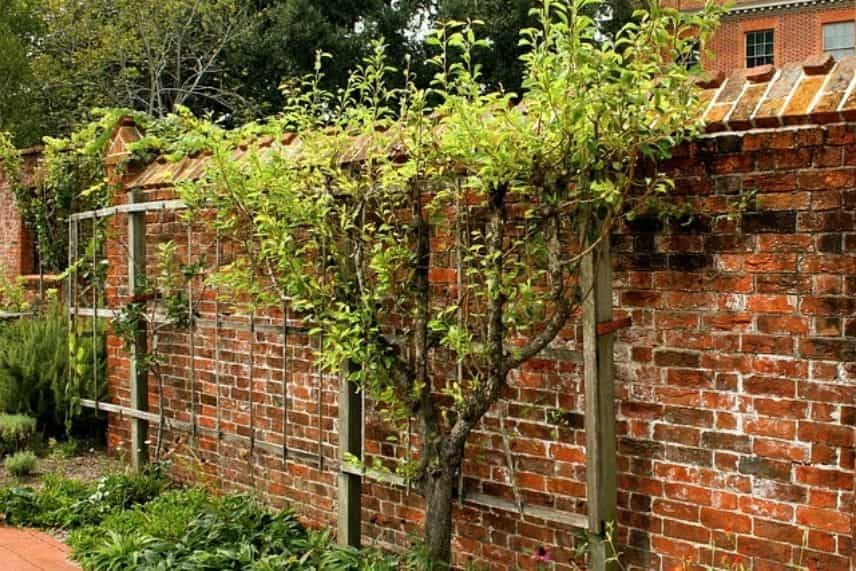
Espalier fruit tree against a wall
The advantages of this pruning technique are numerous: faster fruiting, an elegant silhouette of the tree, greater light exposure for the fruits, and easier maintenance and pruning…
The most commonly espaliered trees are pear trees, apple trees, apricot trees, peach trees, and almond trees. Among apple trees, varieties such as ‘Belle de Boskoop’, ‘Jonagold’, ‘Reinette grise du Canada’, ‘Golden Delicious’, or ‘Reine des Reinettes’ are well-suited for espalier cultivation, while among pear trees, varieties like ‘William’s’, ‘Conference’, and ‘Doyenné du Comice’ also adapt easily to this type of pruning.
Read also
10 dwarf fruit trees to grow in potsClimbing fruit trees to make the most of all the space
These fruit trees, or rather fruit plants, generally have lianas that will intertwine and weave between the supports you provide: trellis, training, fencing, or simple taut wires… which need to be sturdy but will have the advantage of directing these plants where you want them to go. They can even twine around a pergola and provide you with beneficial shade. Once again, you gain a coveted space and can harvest fruit (almost) within reach.
There are enough fruit plants to vary the pleasures and stagger the harvest season. First and foremost, the grapevine stands out for offering its clusters of black or white grapes. But did you know that you can also harvest kiwis in your small urban garden? The Actinidia is indeed one of those climbing plants that grows practically everywhere due to its hardiness. Be sure to choose a self-fertile variety if you do not have enough space to accommodate two plants.

The actinidia forms climbing lianas ideal for a city garden
However, if you want to enjoy the fruits of the passion flower, you must live in the south of France. As for blackberries (Rubus fruticosus), they are cultivated and very few thorny, adapting to all climates.
The goblet, a fruiting shape suitable for small gardens
It is a low-stem fruit tree that rarely exceeds 4 metres, making it perfect for an urban garden. It is said to be goblet-shaped because it takes the form of a glass. Its trunk measures 40 to 60 cm, and the 3 to 5 main branches radiate from this trunk. Goblet fruit trees spread out to 2 to 3 metres in width. Generally, fruit trees purchased in goblet form are already 2 to 4 years old, so they bear fruit in the year of planting.
This is the ideal shape for small gardens but also for beginners, as the tree is already formed in a goblet shape. A single light pruning is sufficient to maintain this shape while also facilitating the penetration of sunlight and air. Again, with this shape, maintenance and fruit harvesting are made easier. However, the relatively low branches may pose a nuisance on a lawn.
We offer various goblet fruit trees, including pollinator duos of pear trees, apple trees, and plum trees.
And of course, dwarf fruit trees
Some fruit trees naturally have a low growth habit, making them easy to plant in an urban garden. This category includes raspberries, blackcurrants, redcurrants, and other blueberries, even though they are more shrubs than trees. If we focus more on trees, we cannot overlook quinces, medlar trees, and fig trees.
Quince (Cydonia oblonga) forms a small tree of 4 to 5 metres, particularly hardy and vigorous, producing quinces, fleshy fruits that are best enjoyed cooked. The medlar, or rather the medlar trees, since we distinguish between the common medlar (Mespilus germanica), which produces medlar fruits, and the Japanese medlar (Eriobotrya japonica), which yields loquats, typically reaches 3 to 5 metres. They can therefore find their place in a small urban garden (only in the south of France for the Japanese medlar), enhancing it with beautiful flowering.

With a low growth habit, the quince, fig tree, Japanese medlar, and common medlar easily find their place in an urban garden.
The fig tree (Ficus carica) can thrive in an urban garden as it will be in the sun and especially sheltered from winds and cold. Although emblematic of the south, it grows in many climatic zones. With its often twisted trunk and rounded habit, it is ideal for a small space. Moreover, it reaches a maximum height of 3 to 5 metres. There are even dwarf varieties. The variety ‘Icecrystal’ does not exceed 2 metres, just like the early fig ‘Dalmatie’ or the renowned ‘Goutte d’or’.
- Subscribe!
- Contents
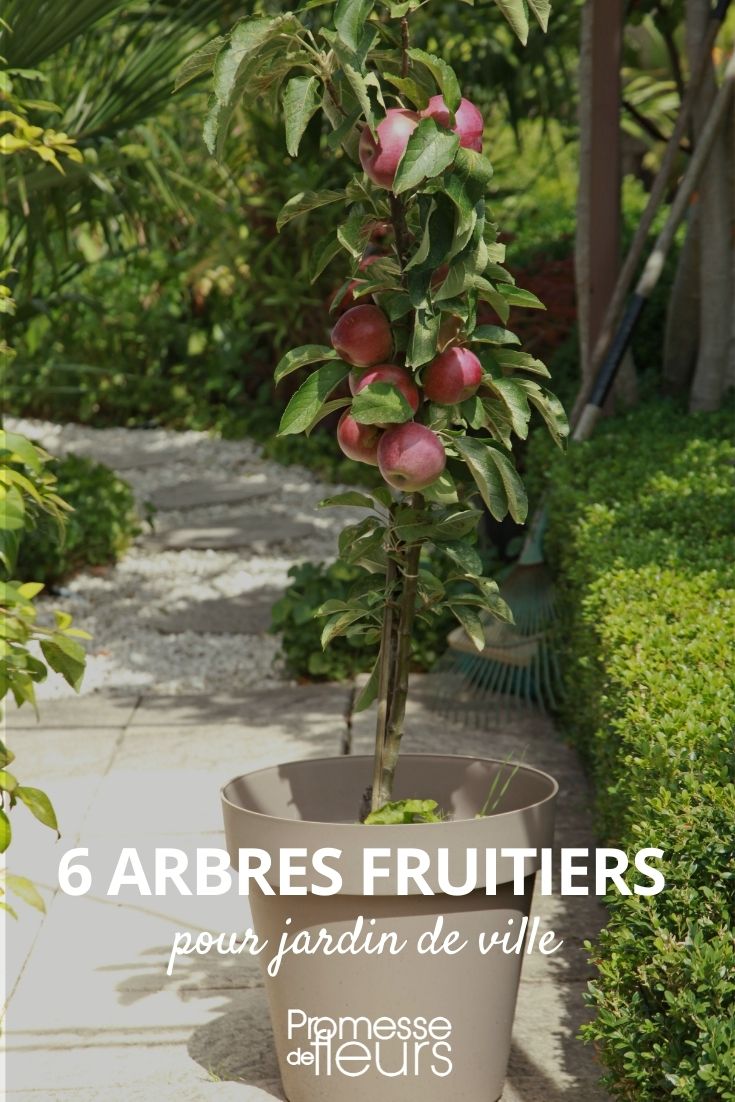































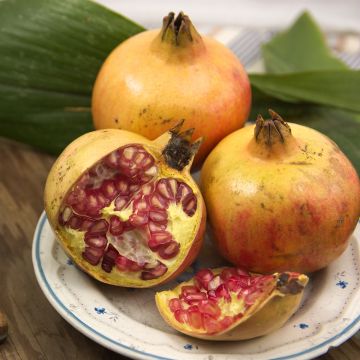
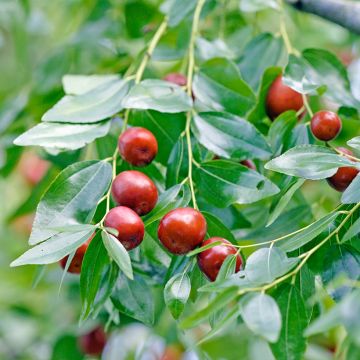

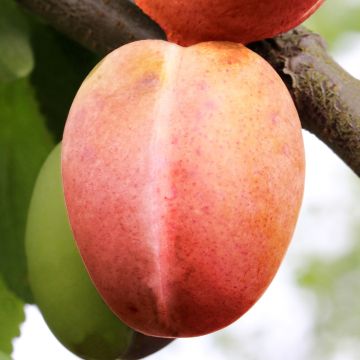




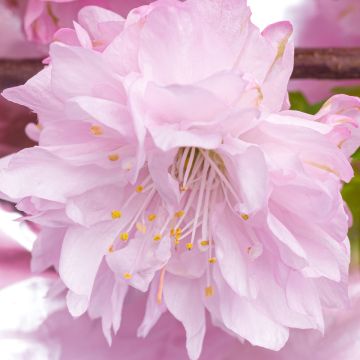
Comments